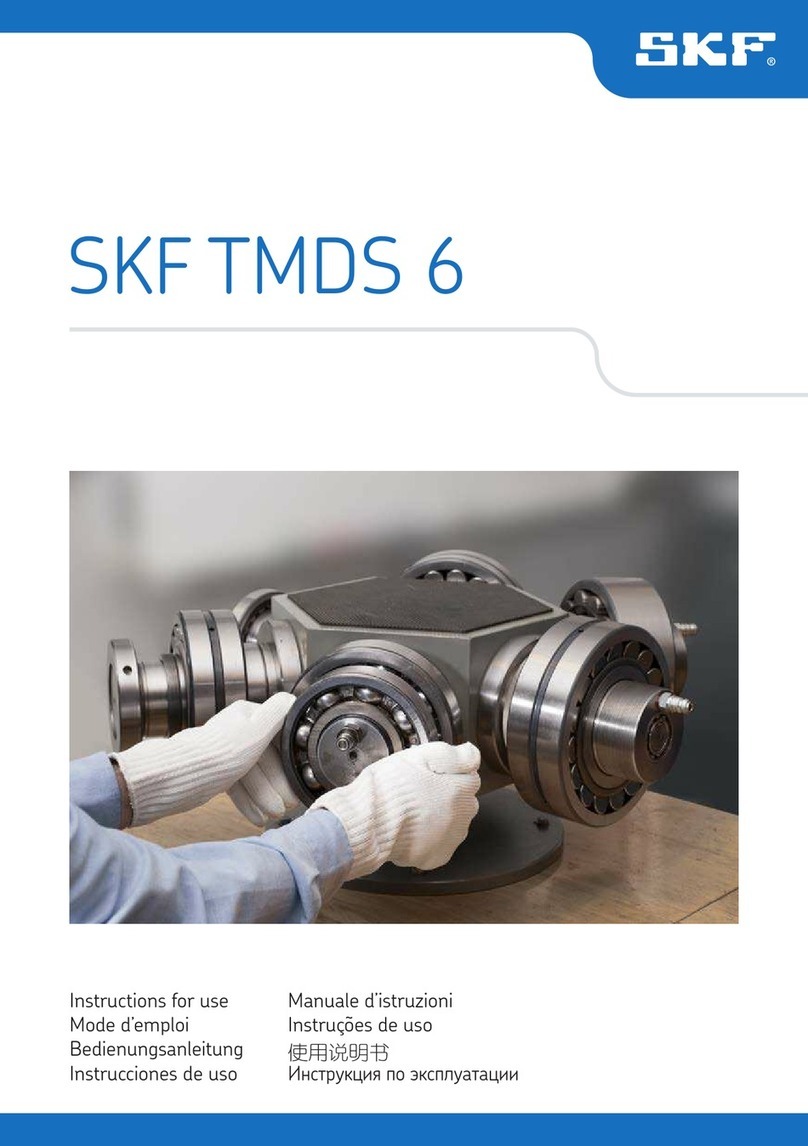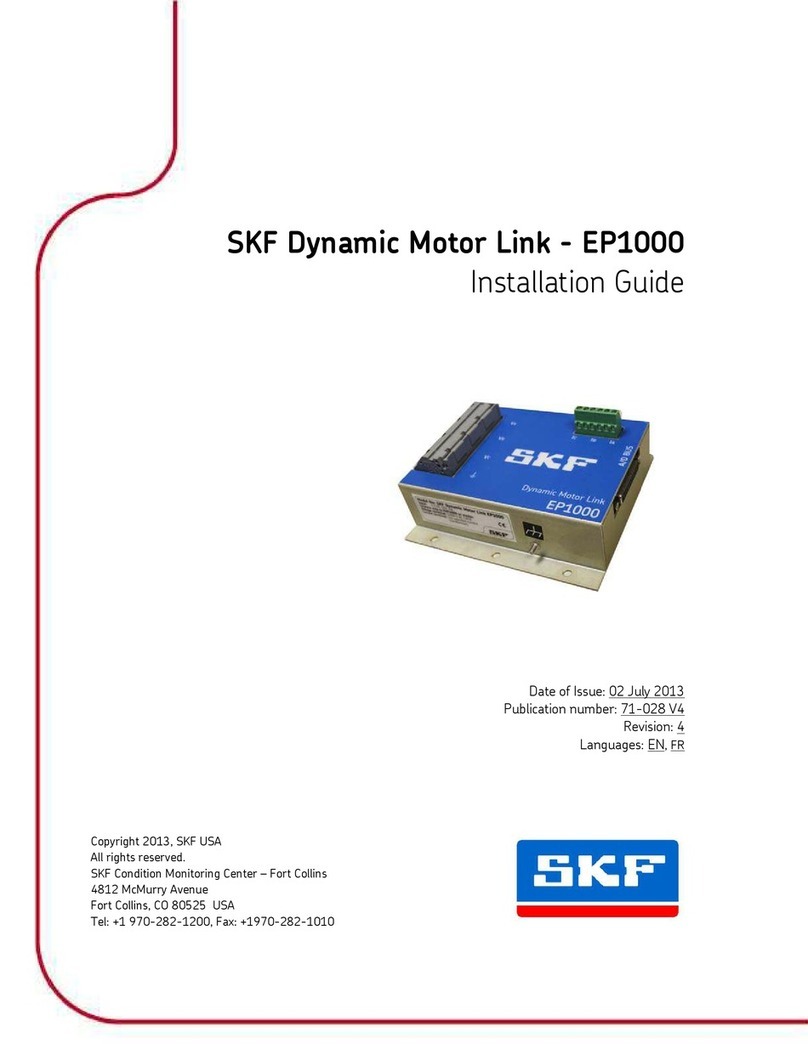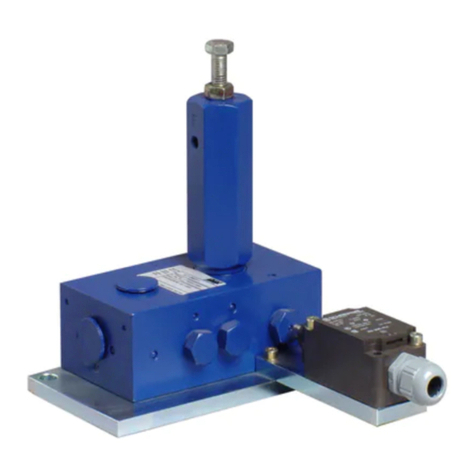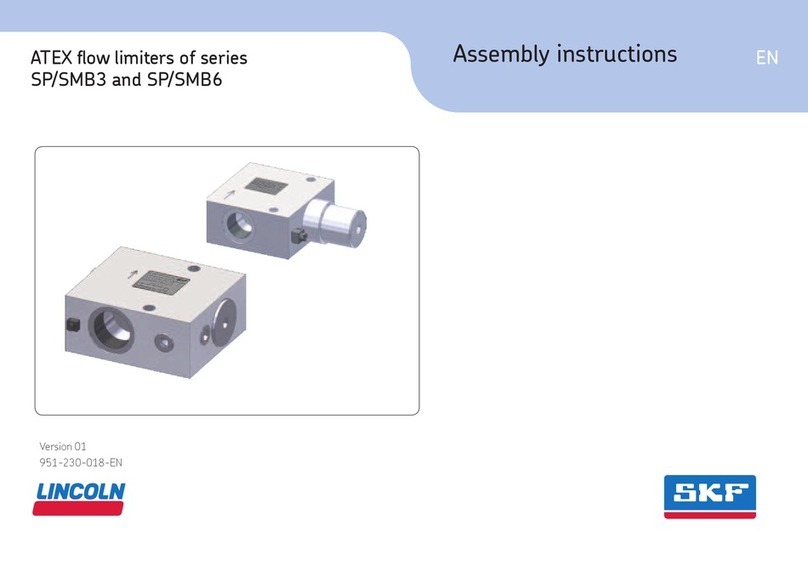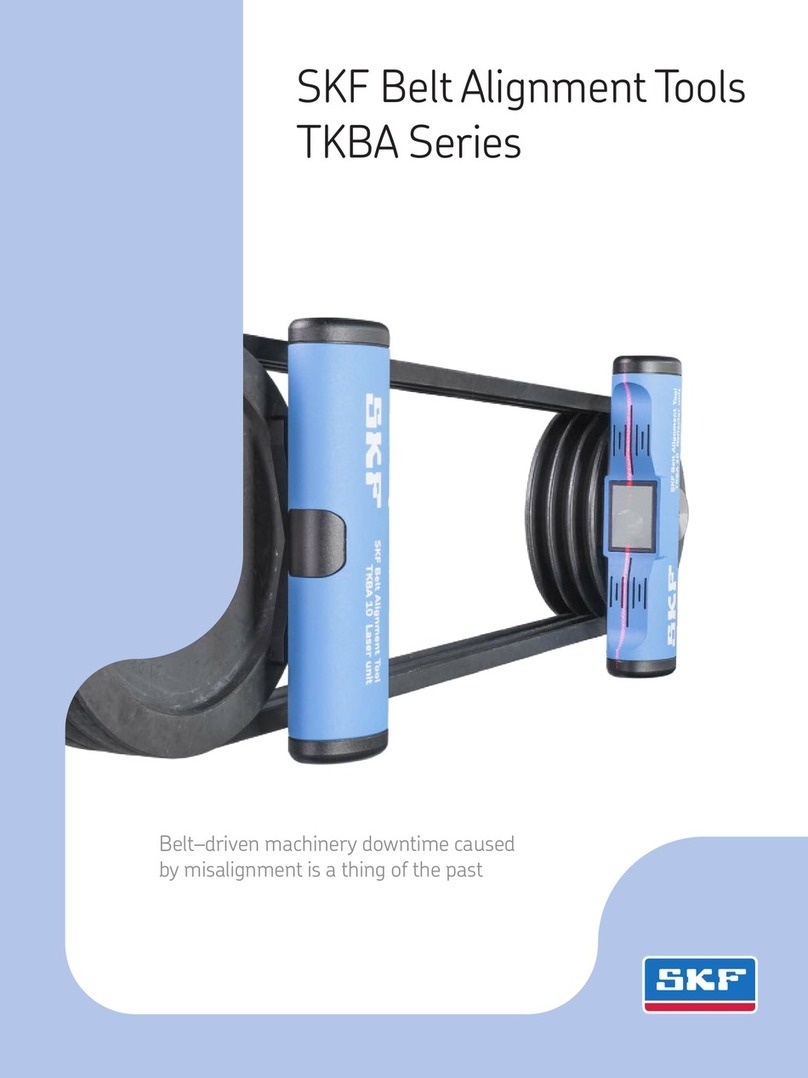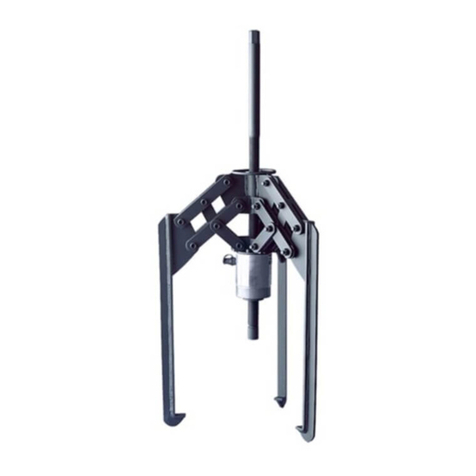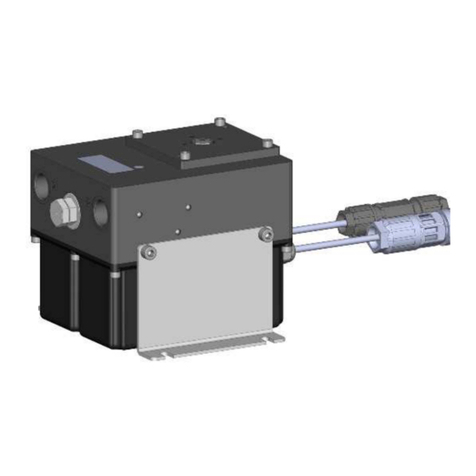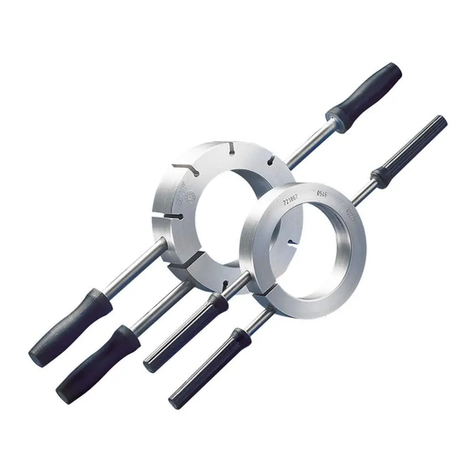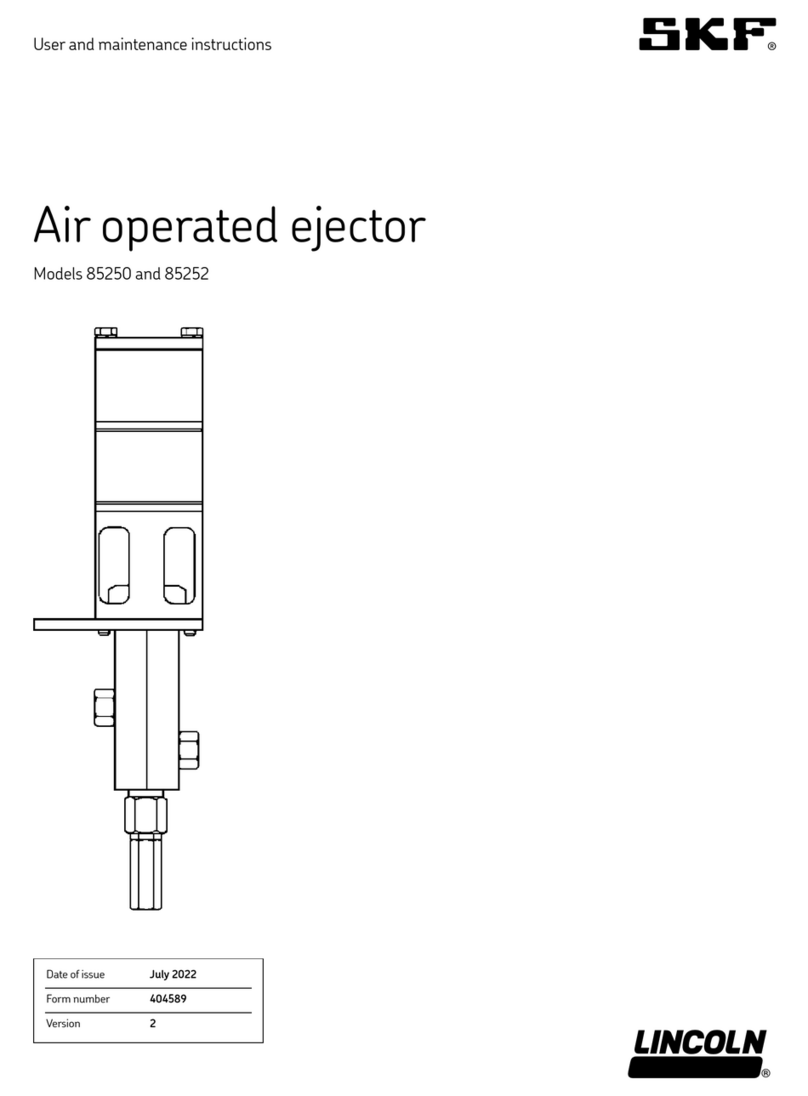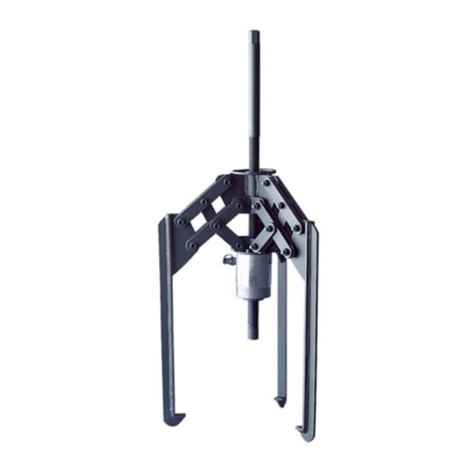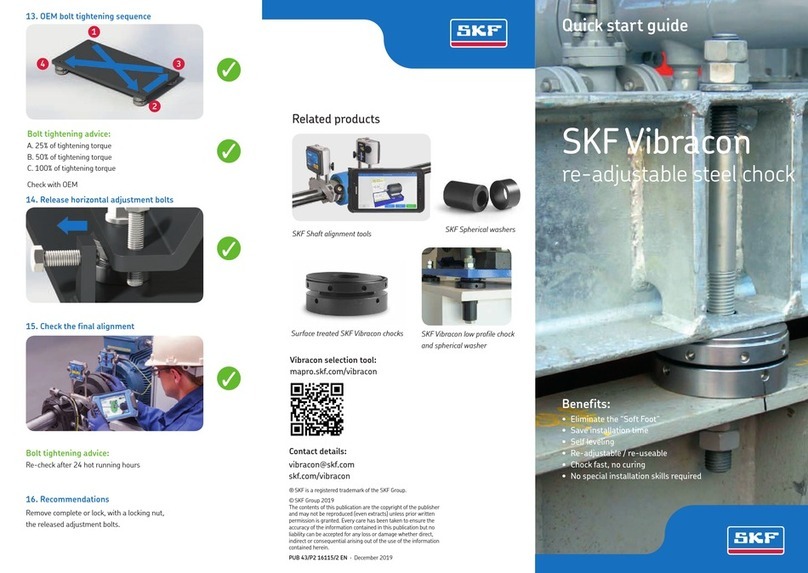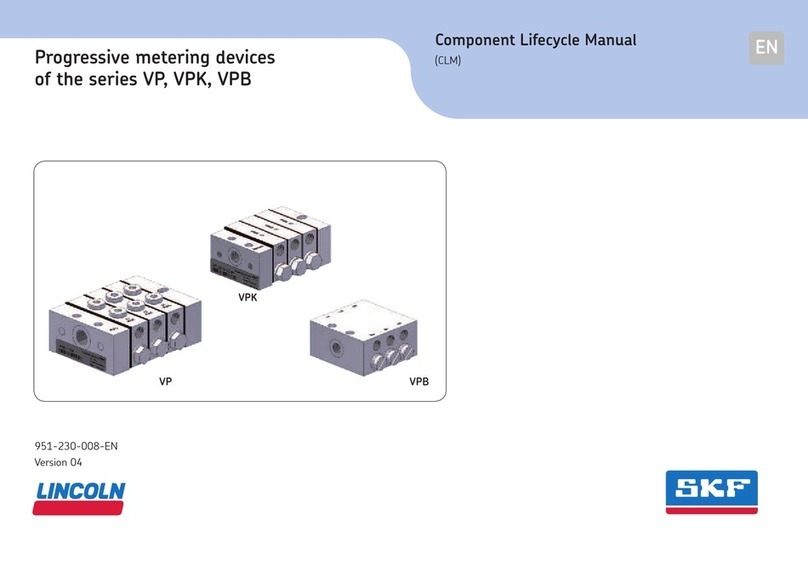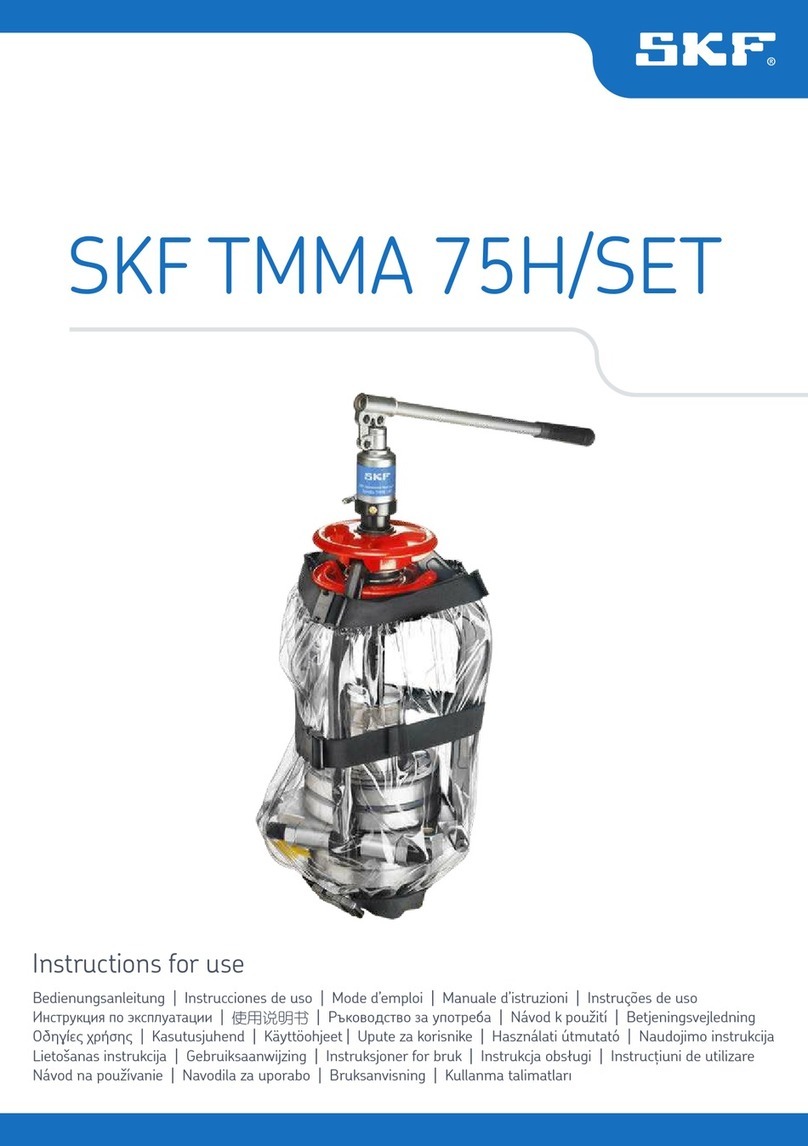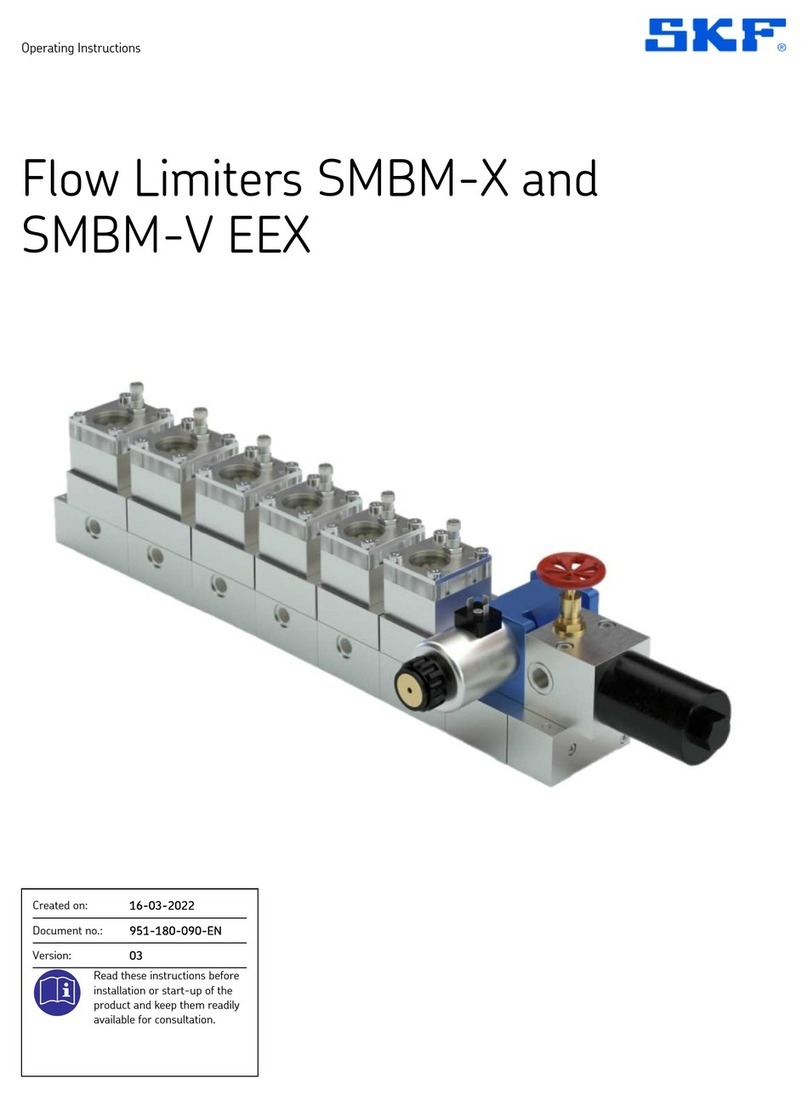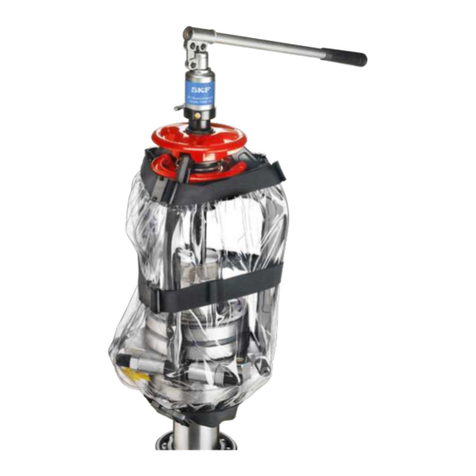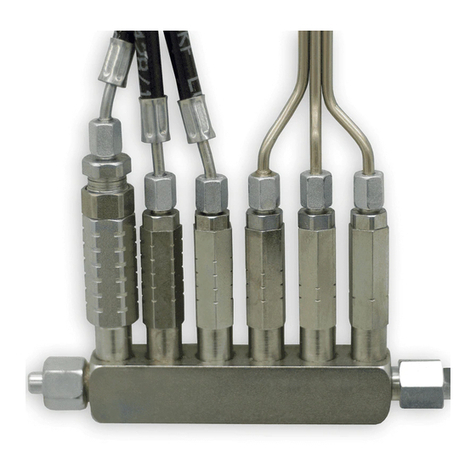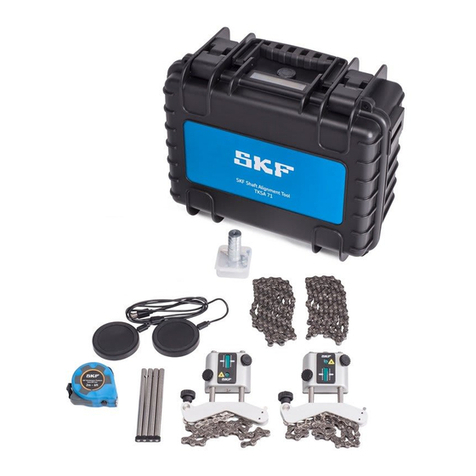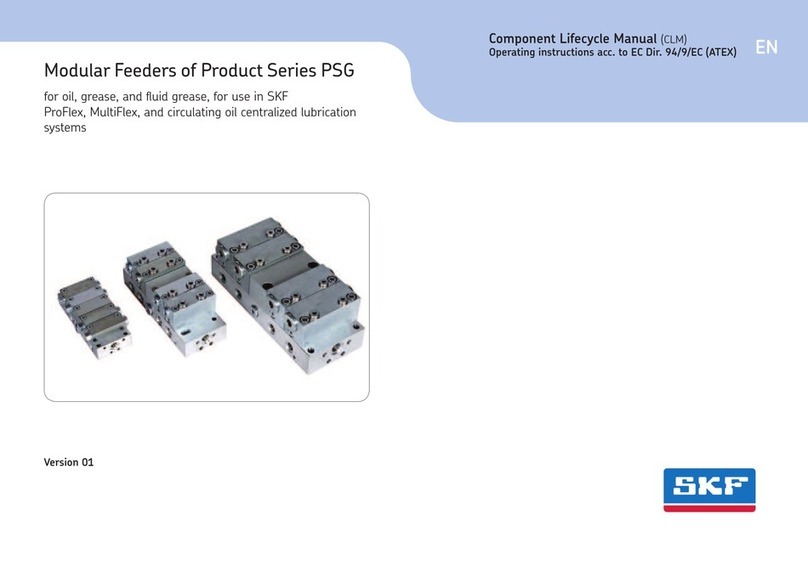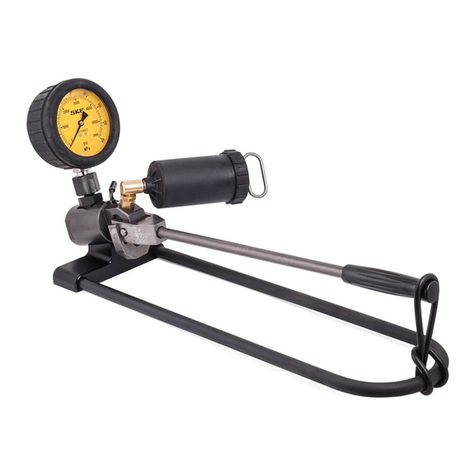6SKF TKBA 40
2. Belt alignment tool
2.1 Technical data
Transmitter Unit
Type of laser Red laser diode
Laser 1™ Built-in class 2 laser, <1mW, 632nm
Laser line length 3 m at 2 m (9.8 ft at 6.6 ft)
Measurement Accuracy
Angular Better than 0,2°
Measurement Accuracy
Offset Better than 0,5 mm (0.02 in.)
Measurement distance 50 mm to 6 000 mm (2 in. to 20 ft)
Control Laser on/off switch
Housing Material Extruded aluminium
Colour Silver, blue, black
Transmitter unit dimensions 70 ™ 74 ™ 61 mm (2.8 ™ 2.9 ™ 2.4 in.)
Transmitter unit weight 320 g (0.7 lbs)
Receiver Unit
Housing Material Extruded aluminium
Colour Silver, grey, blue
Reflector dimensions N/A
Receiver unit dimensions 96 ™ 74 ™ 61 mm (3.8 ™ 2.9 ™ 2.4 in.)
Receiver unit weight 270 g (0.6 lbs)
Fixtures
Mounting “Magnetic, groove mounted
(optional side adapter TMEB A2)”
V-guides Size 1: 22 mm, short rods (3™ pairs)
Size 2: size 22 mm, long rods (3™ pairs)
Size 3: size 40 mm, short rods (3™ pairs)
Size 4: size 40 mm, long rods (3™ pairs)
Battery and Power
Battery 2™ AAA Alkaline type IEC LR03
Operation time 20 hours continuous operation
